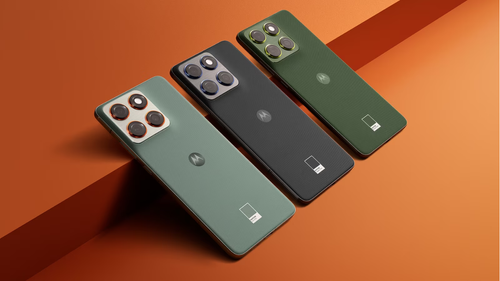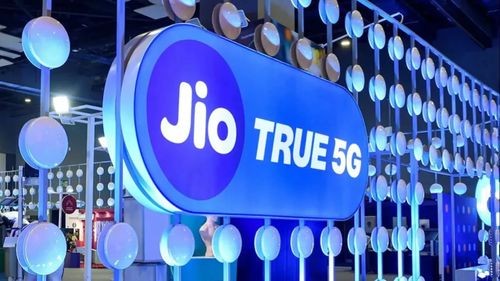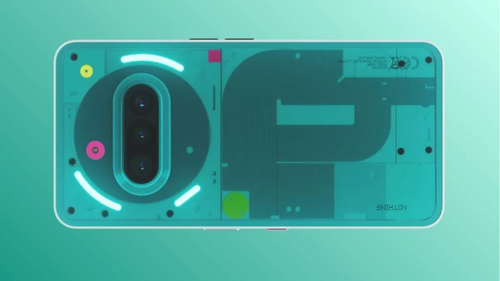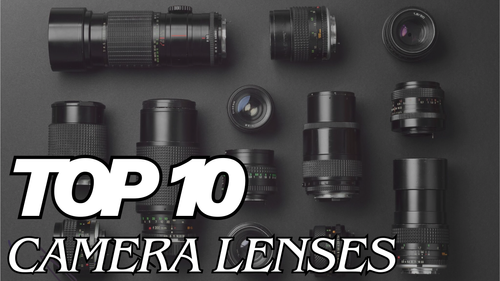Ad
Articles
AC Buying Guide India 2025: Everything You Need to Know Before Purchasing an Air Conditioner
AC Buying Guide India 2025: Everything You Need to Know Before Purchasing an Air Conditioner
As a technology journalist who's reviewed countless home appliances over the years, I've seen how air conditioners have evolved from luxury items to essential household must-haves in India. With summers growing hotter and more humid across the country—from the scorching heat in Rajasthan to the sticky monsoons in Kerala—buying the right AC can make all the difference in your comfort. But with so many options, it's easy to feel overwhelmed. This comprehensive AC buying guide for 2025 is designed to help Indian consumers like you make a smart choice. We'll cover everything from AC types and how to pick the right size (tonnage) to key factors like energy ratings, features, brands, installation, maintenance, and even environmental impacts. Tailored for India's unique climates, power issues, and budgets, this guide will explain you all. By the end, you'll know exactly what to look for to get reliable cooling without wasting money. Let's start your journey to a cooler home.
Understanding the Different Types of ACs Available in India

Before diving into specs, it's crucial to know the main types of air conditioners. In India, where homes range from compact urban flats to spacious rural houses, the type you choose affects installation, efficiency, and cost.
First, there's the split AC, the most popular choice. It has two units: an indoor one mounted on the wall and an outdoor compressor. Splits are quiet, energy-efficient, and great for even cooling in medium to large rooms. They're ideal for modern apartments in cities like Mumbai or Bangalore, where noise and aesthetics matter. However, they need professional installation, which adds to the cost.
Next, window ACs are single-unit systems fitted into a window or wall hole. They're cheaper, easier to install, and suit rentals or older homes in places like Kolkata. While they might be noisier and less efficient than splits, they're reliable for small to medium rooms and handle India's power fluctuations well.
Then, inverter ACs vs. non-inverter ACs. This isn't a type but a technology. Inverter ACs adjust compressor speed based on room temperature, saving up to 50% on electricity—a big win in high-bill areas like Tamil Nadu. Non-inverter (fixed-speed) models are cheaper upfront but run at full power or off, leading to higher bills and more wear. For India's frequent voltage drops, inverters are smarter.
Other options include portable ACs, which are movable and great for small spaces without permanent setup, though they're less efficient for large areas. Central ACs are for big homes or offices, distributing cool air through ducts, but they're expensive and rare in average Indian households. Cassette or tower ACs are for commercial use or large halls, not typical for homes.
In humid coastal regions like Kerala, opt for ACs with dehumidifiers. For dusty inland areas like Punjab, look for strong filters. Always match the type to your space and lifestyle—splits for quiet homes, windows for budgets.
How to Determine the Right AC Size (Tonnage) for Your Room

Getting the tonnage wrong is a common mistake that leads to poor cooling or high bills. Tonnage measures cooling capacity—1 ton equals about 12,000 BTUs per hour. In India, where room sizes and climates vary, use this simple guide to calculate.
Start with room size in square feet. For a standard 8-10 ft ceiling:
- Up to 120 sq ft: 0.8-1 ton (small bedroom)
- 120-150 sq ft: 1-1.5 ton (medium bedroom)
- 150-200 sq ft: 1.5-2 ton (living room)
- Over 200 sq ft: 2 ton or more
But don't stop there—factor in other elements. Add 0.5 ton if the room gets direct sunlight or has many people (like a family hall). For high ceilings or poor insulation (common in older Indian homes), go higher. In hotter northern states like Uttar Pradesh, increase tonnage by 20%. Use an online calculator or this formula: Tonnage = (Room length x width x height / 1000) + adjustments for heat sources like windows or appliances.
For example, a 150 sq ft room in sunny Delhi might need 1.5 ton, while the same in cooler hilly areas could do with 1 ton. Undersized ACs work harder and fail faster; oversized ones cycle on-off often, wasting energy. Consult a pro for accurate measurement—many brands offer free site visits.
Energy Efficiency: Decoding Star Ratings and ISEER

In India, the Bureau of Energy Efficiency (BEE) rates ACs from 1 to 5 stars—higher stars mean better efficiency and lower bills. A 5-star AC can save up to 60% power compared to 1-star. Look for the ISEER (Indian Seasonal Energy Efficiency Ratio) value on the label—higher is better (aim for 4.5+ for inverters).
For budget buyers in high-cost states like Maharashtra, 3-star is a good start; premium users in hot zones should go 5-star. Inverter ACs boost ratings by varying speed, unlike fixed-speed models. With India's power shortages, efficient ACs reduce load on grids. Check annual energy consumption on the label to estimate bills—e.g., a 1.5 ton 5-star might use 800 units/year vs. 1200 for 3-star.
Essential Features to Consider When Buying an AC
Features make or break your AC experience. Prioritize these for Indian conditions:
-
Inverter Technology: Saves power and provides stable cooling during voltage dips common in rural areas.
-
Refrigerant: Go for eco-friendly R32 or R410A over outdated R22—they're better for the ozone and more efficient.
-
Air Filters: PM 2.5 or anti-bacterial filters are must-haves for polluted cities like Delhi or Bangalore, removing dust and allergens.
-
Noise Levels: Under 40 dB for indoor units to avoid disturbing sleep—key in quiet neighborhoods.
-
Warranty: 5-10 years on compressor, 1-5 on overall unit. Brands with wide service networks like Voltas are reliable.
-
Smart Controls: Wi-Fi and app connectivity for remote operation—handy for working pros.
-
Other Perks: Self-clean to prevent mold in humid Kerala, turbo mode for quick cooling, dehumidifier for monsoons.
Avoid gimmicks; focus on needs like allergy protection if you have kids.
Popular AC Brands in India: Which One to Trust?

India's market favors brands with strong service. Voltas leads for affordability and wide reach. LG and Samsung offer smart features. Daikin excels in efficiency. Haier provides heavy-duty models for extreme heat. Lloyd (Havells) gives value with stylish designs.
Choose based on budget: Voltas/Haier for under 40,000; LG/Daikin for premium. Check reviews for service—important in remote areas.
Budget and Cost Factors: Hidden Expenses to Watch
ACs start at 25,000 for 1 ton, up to 60,000 for 2 ton inverters. Factor in installation (2,000-5,000), stabilizer (2,000-4,000 for power issues), and annual maintenance (1,000-2,000). Running costs: A 1.5 ton 3-star might add 1,000-2,000/month to bills in peak summer.
Installation and Maintenance: Keeping Your AC Running Smoothly
Professional installation ensures safety and efficiency—brands often provide it free. Place the outdoor unit in shade, away from direct sun.
Maintenance: Clean filters every 2 weeks to avoid dust buildup in Punjab's dry air. Annual servicing prevents breakdowns. In humid Goa, check for mold. Use voltage stabilizers to protect from surges.
Environmental and Health Considerations
Choose ACs with low GWP refrigerants like R32 to reduce ozone impact. Efficient models cut carbon emissions. For health, filters remove PM 2.5 and bacteria, vital in polluted metros.
Final Thoughts: Make a Smart AC Purchase in 2025
Buying an AC in India means balancing type, size, efficiency, and features with your needs. Whether a budget window or smart split, focus on BEE ratings and warranties for long-term value. Stay cool and comfortable—your perfect AC awaits.
FAQs: AC Buying Guide India 2025
1. Which AC type is best for small apartments?
Split ACs are quiet and space-saving; window for easy install in rentals.
2. How do I calculate AC tonnage?
Measure room sq ft: 1 ton for 100 sq ft. Add for sun exposure or high ceilings.
3. What do star ratings mean?
Higher stars (3-5) mean better efficiency, saving up to 60% on bills.
4. Inverter vs non-inverter: Which to choose?
Inverter for power savings and stability in fluctuations; non-inverter for lower upfront cost.
5. Key features for polluted areas?
PM 2.5 filters and anti-bacterial tech to clean air.
6. Best brands for budget buyers?
Voltas, Haier, Lloyd for value; LG, Daikin for premium.
7. How to maintain my AC?
Clean filters monthly, service yearly; use stabilizers for surges.
Follow Us:
Ad
Recent News

Motorola Edge 70 Launches in India: Slim Design, Strong Battery
15-Dec-2025 07:14 AM

Jio’s Happy New Year 2026 Plans: Get Unlimited 5G and more
15-Dec-2025 06:38 AM

Amazon Bets Big on India’s AI Boom with New 2030 Roadmap
12-Dec-2025 12:23 PM

Google AI Plus Plan Launched in India: Affordable Access to Advanced AI Tools
10-Dec-2025 09:11 AM

Nothing Phone 3a Community Edition Launches in India: A Fun, Fan-Made Phone
10-Dec-2025 06:30 AM
Reviews & Guides
View All

Nothing Phone 3a Community Edition First Impressions: A Fresh Take on Budget Smartphones

Realme P4x 5G Review: Budget-Friendly Beast with Epic Battery Life

Sony BRAVIA 7 Mini LED K-65XR70 vs. Haier Mini LED H65M95EUX

Samsung QN90F (65QN90FAU) Review: The King of Bright-Room Viewing

Why doesn’t Apple reveal the iPhone battery in advertisements?

Donald Trump Watch Collection: Timeless Luxury on the Wrist

Best 5 Litre Water Heaters in India 2025: Top Latest Models for Quick Hot Water

Top 10 camera lenses you should Own in 2025
Ad
Latest Mobiles In India
Ad
Ad












